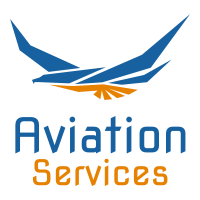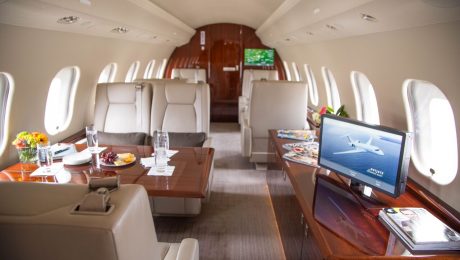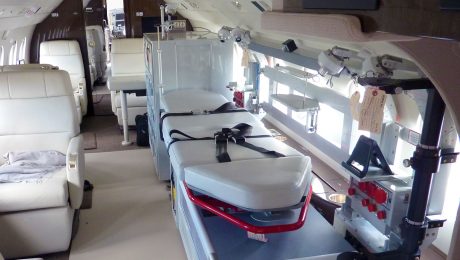13 Differences Between A Private Jet Charter And Buying An Airline Ticket (by Forbes.com)
Never in the history of private aviation have there been so many first-timers in such a short period. With COVID-19 risk 30 times lower when flying privately, much of the industry’s rebound is based on newcomers. If flying on a private charter is new to you, here are some of the differences compared to airlines.
1. You choose the departure time When booking your charter flight, be it on a one-off charter or with a jet card, you specify the time you want to leave. It’s on your schedule. Most domestic private flights are during the daytime, and unlike airlines, where overnight flights are cheaper, it’s the reverse when flying privately. While you can specify when you want to depart, if you have flexibility, ask your broker if you can save money by leaving at a different time or day. Prices can vary by thousands of dollars.
2. You choose the airports Private jets in the U.S. have access to over 5,000 airports compared to under 500 used by the airlines. Tell your provider where you are leaving from and where you need to go when you land instead of the airports you would use if flying with an airline. Your broker may be able to suggest more convenient airports that will shave hours of your total travel time.
3. There are no boarding passes You don’t get a boarding pass, you get a tail number. If you are booking one-off charters, you may get your tail number when you book. In fact, you are often reserving a specific aircraft. With jet cards, typically your provider will email you at least 24 hours prior to departure. When you get to the private jet terminal, called an FBO, you provide the tail number to the reception desk and they will connect you with your pilots. Recommended For You * France, Germany, Finland-10 European Countries Lift EU Travel Ban For Couples * Got $100K? $500K? $3M? Ultra-Rich Americans Are Spending Big On Second Passports * Update On New York’s Extensive Travel Restrictions MORE FROM FORBESPrivate Jet Providers NetJets, Directional Aviation Plan Big GrowthBy Doug Gollan Do keep in mind, your aircraft may need to pick up other passengers after dropping you off, or your crew may have been flying already, and need to complete your trip within their duty limits. In other words, if you arrive early, you might be able to leave early, but don’t be late. If you are running late, call the FBO and your broker or operator if you booked the flight directly. You’ll find they will do their best to accommodate you.
4. There can be up to six different private jet terminals at a single airport While FBOs provide a lounge area to wait and meet your crew, they are essentially gas stations for private jets. If you think about the intersection of busy highways, chances are there is a gas station on each corner. Likewise, high volume airports will have anywhere from three to six FBOs. In some cases, one company operates multiple terminals. At Teterboro Airport, the busiest private jet airport in the U.S., Signature Flight Support has three separate locations, each over a mile apart.
5. Freshen up in the FBO before boarding your flight So you think the toilets on airliners are a tight fit. Most first-timers charter the most cost-effective aircraft for their flight, so it’s often a light or midsize jet, or even a turboprop. While most private jets have at least an emergency potty, and typically a lavatory with a fixed-door, on small private jets they can be quite cramped. In other words, show up a few minutes early and freshen up at the FBO before boarding.
6. If your provider cancels, you have to pay the difference for replacement flights When you book private jet flights on a one-off basis, referred to as on-demand or ad hoc charter, if the operator cancels, be it a mechanical issue or a sick pilot, you have to pay the difference if replacements flights cost more. It’s what brokers refer to as “the painful conversation.” MORE FROM FORBESHow To Fly By Private Jet In A World With COVID-19By Doug Gollan Your provider will seek to find the best options, however, if you want to go, you have to pay the difference, which can mean thousands of dollars that need to be wired on short notice if a credit card can’t be used. Good brokers will guide you to dependable operators, not just the lowest price. One reason frequent private fliers move to jet cards is when there are non-weather related cancelations, many guarantee getting you a like or better aircraft at their expense. Some will even compensate you with free flight hours for the delay.
7. There are no assigned seats Once you get onboard, it’s like Southwest Airlines, in other words, free seating. Typically the person who is paying will take first dibs or make suggestions.
8. You probably won’t have a flight attendant Unless you book a large cabin private jet, it’s unlikely you will get a flight attendant. If you book a smaller aircraft, frankly there isn’t that much room. One of the pilots will do the safety demonstration.
9. Not all private jets offer WiFi While WiFi is fairly standard on domestic airline flights, it varies on private jets. If you need to be connected, you should request it when you book, or you can buy jet cards that include WiFi in the price. If it’s not specifically included, be careful, as you may find yourself getting billed hundreds of dollars later as a post-flight charge. Yes, it was in your contract. Make sure to read the fine print.
10. Catering is usually an extra charge Generally you will find packaged snacks, sodas, minis of standard spirits, wine splits, coffee, and ice. Anything else needs to be ordered in advance, and generally is charged on an a la carte basis with fancy restaurants prices for sandwiches and fruit platters. Don’t feel you have to order catering. Many regulars don’t.
11. You’re responsible for damage to the airplane If your kid draws on the sidewall or you spill that Pinot Noir on the carpet and it can’t easily be cleaned, expect a bill. Turbulence is not an excuse. You may want to think twice before you open the red wine. Many private jets on the charter market are owned by individuals or companies who rent them out when they aren’t using them. Treat the cabin as if you were visiting your bosses home.
12. You can tip the crew When you show up at the private jet terminal, line staff from the FBO will help with bags, and one of your pilots will then load them in the cabin and hold. Your flight crew will likely also help you find the drinks and snacks, and get you set-up with welcome aboard drinks. Tips are appreciated although policies vary by company. You can find more here.
13. You won’t find a taxi stand when you land Unlike airports where when you come out of the terminal, there is a taxi stand, make sure to arrange your transportation before you depart. At small airports, you may find that Ubers or local taxi services aren’t always available. At big airports, it may also take ride share services awhile to find you. FBOs are often hidden between hangars or other buildings, not easy to find, in places drivers aren’t familiar with. Your broker or operator can arrange ground transportation, and if your pilots don’t see a note about it, they will often ask when they greet you you.
Other differences
There are certainly more differences. You don’t go through the typical security screening, however, everyone flying with you needs to be on the manifest of a charter flight. If there are changes, make sure to update your provider, typically at least 24 hours prior to departure as names have to be run against TSA’s No Fly list. Like the airlines, everyone will need a government ID. Your flight crew is responsible for checking, and you won’t be allowed to fly without one.
Read full article on Forbes.com
- Published in Private Chartering
Before You Book Your First Private Jet Charter Flight (article by Forbes.com)
*article by Forbes.com
As private jet travel rebounds to more than 80% of pre-COVID-19 levels, it does so based on the strength of you, the first-time private flyer. From large fleet operators to boutique brokers, virtually all report a spike in new-to-market fliers. Primary reasons include minimizing potential COVID-19 exposure and lacking airline schedules.
No matter what your reason, this is a follow-up to “13 Differences Between A Private Jet Charter and Buying An Airline Ticket.” Specifically, I want to cover what you need to know before you start researching your first private flight.

What’s the best way to book your first private jet? Here’s what you need to know before you get … [+]
1. Where are you starting from and where do you want to end up?
This might seem silly, but since private aircraft can access around 5,000 airports compared to less than 500 used by the airlines before COVID-19, there’s a good chance there are closers airports than you are used to. By giving your operator or broker the address you are leaving from and where you are going, they can suggest alternatives that can shave hours off your door-to-door travel time.
2. Who and what are you bringing?
If you are looking for the most cost-efficient solution, the type of aircraft that fits your mission is going to depend not only on number of seats, but the number of adults, children under the age of two, size of your pets, amount of luggage, and total weight. The number of seats along with weight, weather and winds will impact the type of private jet best suited for your flight.
The range of a light jet varies from around 600 to 2,000 miles depending on the make and model, plus how many people and how much luggage you have. To get the quotes that best match your needs, details matter, for example, six adults, including three large adults over 300 pounds, six sets of golf clubs, a 150-pound Golden Retriever, etc. This will enable your provider to identify specific aircraft that best fit your needs.
3. Are you flexible on travel dates and times?
While you get to set your departure date and time – it’s on your schedule, not some airline planner – your choices impact your cost. If you are flexible to leave over a span of certain days or times, let your provider know that up front. That will enable them to look for potentially money-savings alternatives. I’ve seen lead pricing between South Florida and New York vary by as much as $5,000 from one day to the next.
If you are really flexible, don’t mind a last minute cancelation and are happy to regroup and look for options on other days, or you have alternate transportation, empty leg fights can provide savings of around 50%. These repositioning flights are returning to base after dropping off customers or heading to their next mission. They are sold at big discounts, however, if the person on the other side of the equation changes his or her plans, yours will cancel, and it could be while you are at the airport waiting to board.
4. When are your coming back?
Qualifying roundtrips in private aviation can cut costs by up to 40%. What do you have to do to get that discount? The standard is two billable flight hours per day. That could be a same-day trip where the outbound and return legs are at least one hour each. It could also mean two four-hour flights leaving on day one and returning day four. Four hours plus four hours equals eight hours, divided by four days, equals an average of two billable hours per day. You’ll have to leave and return from the same airport. It is based on the operator using the same aircraft and flight crew for both legs, so while with jet cards it’s a formalized part of your contract, with on-demand charter it’s more a rule of thumb.
5. How likely are you to change your mind or need to reschedule?
Just like the airlines, when you are chartering a private aircraft, you are entering into a contract that covers what happens if you want to cancel or change. Typically brokers and operators come back with several quotes based on your request.
Since quotes are often based on a specific aircraft, or tail number in industry lingo, the terms can vary. In other words, each quote may have different cancelation terms, including no refunds or changes. When booking ad hoc charters, it’s critical you review the terms of each quote fully. Some aircraft don’t allow pets for example, a reason you need to know if Fido might be traveling with you when you contact the provider.
6. What extras do you want?
If you want catering beyond packaged snacks, coffee, waters and sodas, be sure to specify. Your provider will give you a menu. You will find prices steep for what you get, however, if it adds to your enjoyment go for it!
Also, if you need WiFi, make that clear. Not all private jets have connectivity, and some that do, don’t turn it on for charter flights. Your contract holds you responsible for post-flight charges, so if you ask the pilot to turn on the WiFi and it wasn’t part of the agreement, you could find something akin to those post-check-out charges you get at hotels.
Flight attendants also need to be specified, although they are sometimes included when you charter a large cabin aircraft. On anything smaller than a super-midsize jet, you’ll probably be fine on your own, and in fact, the limited space means you won’t want an extra person.
Lastly, don’t forget about ground transportation. At smaller airports, taxis and ride sharing may not be readily available. Your provider will normally ask you if you need ground transportation.
7. What type of experience do you want?
With apologies to your pre-conceived image about what it’s like to fly privately, the cabin height on light jets is typically under five feet, with midsize aircraft six to eight inches more. The cabins are quite comfortable for sitting, but not so much for walking around. If you want to have that Kim Kardashian-type Lifestyles of the Rich and Famous experience, ask your provider to quote large cabin aircraft. You can also specify minimum cabin height.
8. Who should you contact to book your private flight?
You have two choices – operators and brokers. Operators – the companies that fly the airplanes – at your local airport can be very efficient if you are making qualifying roundtrips – see Question 4. Keep in mind most operators are small.
While you’ll see brokers referencing access to 10,000 aircraft, according to Tuvoli, a B2B tech platform, there are only about 4,000 private jets on Part 135 certificates, in other words, that can be rented legally in exchange for compensation. The rest are helicopters, piston, turboprops, and even airliners. Out of the 573 operators with at least one private jet on a Part 135 certificate, 408 operate five or fewer jets, and 156 operate only one jet. A broker can survey the entire market looking for operators that are the best fit for your flight whereas operators for the most part will try to sell you onto their fleet first.
Like travel advisors, good brokers are like gold. They also know why some prices you might see are lower and what’s a good deal versus the cheapest price.
9. What happens if the operator cancels the flight?
With standard one-off charter contracts, be it a pilot gets sick or there is a last minute mechanical, if the aircraft you chartered can’t make the flight, you’ll get a refund. That’s the good news.
The bad news is if the replacement options cost more, and they usually do at the last minute, you the customer has to pay the difference, if you want to travel. If you are a good, regular client – read spending hundreds of thousands of dollars a year – your broker might consider it a good business move to cover the difference, but that would be the exception.
10. How do I find a good broker?
However, the quality of experience comes from your broker. If you aren’t happy with your initial interactions, ask for another broker. Even better, ask friends who charter regularly for the phone number of their broker, and benefit from their good and bad experiences.
While most online booking is a request form, I highly recommend for first-timers, the best route is to speak to a human being, preferably one with multiple years of experience booking charter flights. Feel free to ask whomever you are speaking with, how many years of experience they have selling charter flights. If they are relatively new, there’s nothing wrong with politely telling them you would like to speak to a broker who has more experience.
11. Are there any other alternatives?
If you don’t want to go through the time it takes to shop and compare quotes for each trip, you need more flexible booking and cancelation terms, and you don’t want to find yourself having to get a last minute re-quote, jet cards and memberships are a good option. The number of jet card providers has more than doubled since the Great Recession because they provide similar benefits to full or fractional ownership, with minimal commitment.
You can buy in for as little as $25,000, so the price of one of two flights. Some even offer pay-as-you-go options, although you pay to join. Many jet cards offer fixed one-way rates with guaranteed availability. That means you know how much you will pay on a per flight hour basis when you sign up. To get that price, you simply have to book a minimum number of hours before departure, anywhere from 5 to 96 hours based on provider. To secure on-demand pricing, you have to commit that day.
For fixed-rate jet cards, it’s the same with cancelations, including some requiring as few as 10 hours notice. And if the operator cancels, your provider will secure a replacement aircraft at their expense, and may even offer you compensation.
Best of all is the convenience. Instead of reviewing quotes for each trip, since you already signed a contract, you can make one call, in some cases book online, or even via email and text message. Do keep in mind, jet card pricing isn’t always lower than on-demand charter costs, so it’s a tradeoff.
- Published in Private Chartering
Air Ambulance Services Market Size to Reach USD 6,050.0 Million by 2026
Air Ambulance Services Market Size to Reach USD 6,050.0 Million by 2026, on Account of Recent Innovations in Medical Service Helicopters: Fortune Business Insights™
Pune, April 07, 2020 (GLOBE NEWSWIRE) — The global air ambulance services market size is anticipated to reach USD 6,050.0 million by 2026 owing to the increasing urban population and rise in the R&D expenditure of advanced passenger drones worldwide. Air ambulance service is a medically well-equipped and innovative facility supported by government agencies, hospitals, and independent service providers to provide transport services via air to people in medical emergencies. A recently published report by Fortune Business Insights™ offers interesting insights and details into the market with prime growth trajectories. The report is titled, “Air Ambulance Services Market Size, Share & Industry Analysis, By Service Operator (Hospital-based, Independent, and Government), By Application (Inter-Facility, Rescue Helicopter Service, Organ Transplant Logistics, Others (Neonatal and Pediatric transport, Overweight Patient Transport, and Medical Equipment Transport)), By Aircraft Type (Fixed-Wing and Rotary-Wing), and Regional Forecast, 2019-2026.” according to which the market value was USD 4,220.9 million in 2018 and will witness rise of 4.71% CAGR between 2019 to 2026What are the Objectives of the Report?
The report offers a comprehensive overview of the market including drivers, restraints, challenges, and upcoming opportunities. It also lists the various segments of the market including factors such as service operator, application, aircraft type, and others. The report discusses the competitive landscape of the market, list of players, and the key strategies adopted by them to contribute the lion’s share to the market. current air ambulance services market trends, innovations, and other key industry developments are also provided in the market. The report is available for sale on the company website.
An Overview of the Impact of COVID-19 on this Market:
The emergence of COVID-19 has brought the world to a standstill. We understand that this health crisis has brought an unprecedented impact on businesses across industries. However, this too shall pass. Rising support from governments and several companies can help in the fight against this highly contagious disease. Some industries are struggling and some are thriving. Overall, almost every sector is anticipated to be impacted by the pandemic.
We are taking continuous efforts to help your business sustain and grow during COVID-19 pandemics. Based on our experience and expertise, we will offer you an impact analysis of coronavirus outbreak across industries to help you prepare for the future.
Competitive Landscape:
Air Methods Dominating Market with Constant Product Innovations
The market for air ambulance services is dominated by Air Methods owing to their diverse portfolio and constant innovations in new helicopters by the company. Such initiatives will help earn high air ambulance services market revenue in the forecast period.
Market Drivers
Medical Services Provided in Remote Locations will Help Expand Market Size
The technology used in helicopters for healthcare emergency services have witnessed a drastic improvement in the past years in terms of medical devices such as defibrillators, HER systems, heart monitors, communication equipment, for providing a patient’s real-time data to the medical staff at the hospital. This serves as a major factor promoting the air ambulance services market growth. In addition to this, the use of air ambulance services reduces transportation time and increases the chances of saving a life thus, adding boost to the market in the long run. This, coupled with the fact that air ambulances can provide medical aid even in remote locations is also expected to create lucrative growth opportunities for the market in the forthcoming years.
Regional Overview:
North America Emerged Dominant Owing to Presence of Several Healthcare Service Providers
Regionally, North America held the highest air ambulance services market share in 2018 with a revenue of USD 2,469.3 million. This is attributed to the presence of large number of service providers, and the developed infrastructure in Canada and the U.S. This, coupled with rise in awareness about better medical facilities and diagnostic options are also propelling the demand for aerial helicopter services in the region.
On the other side, the market in Asia Pacific and Europe will witness significant growth in the forecast period owing to the rise in government investments on improvement of helicopter services and rising number of air ambulance service providers in the respective regions. This includes recent investments between 2018 and 2019 in nations such as China, India, Germany, UK, France, among others. This, coupled with the increasing urbanization will provide lucrative growth opportunities for the market in the forecast period.
- Published in MedEVAC, Private Chartering



